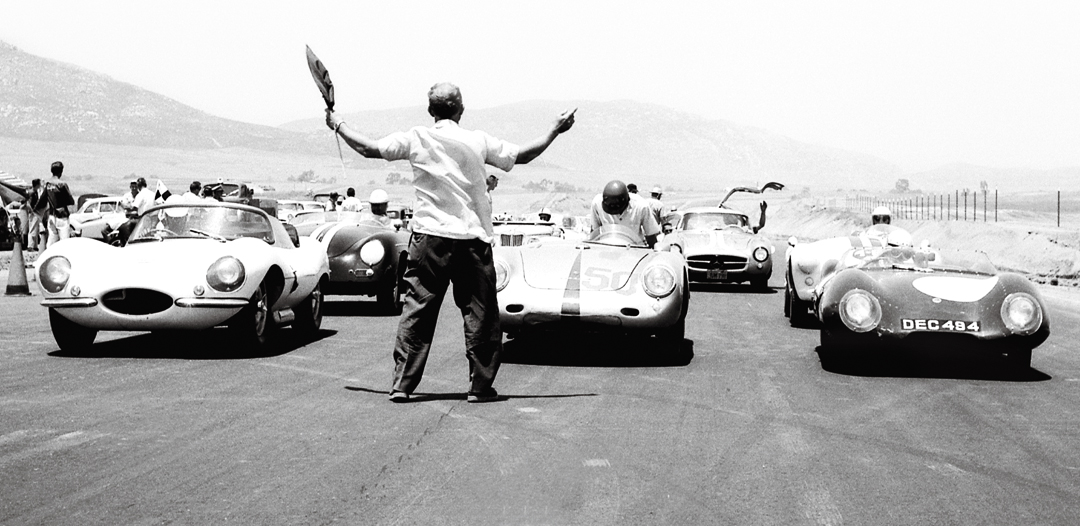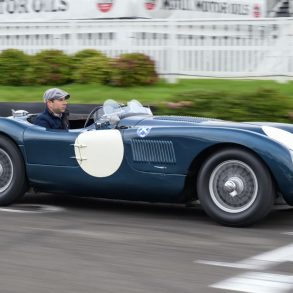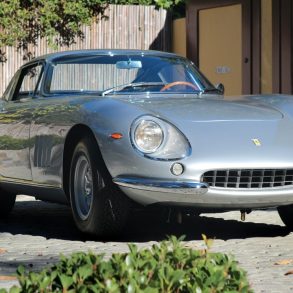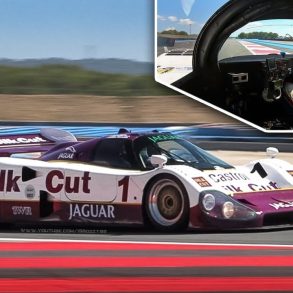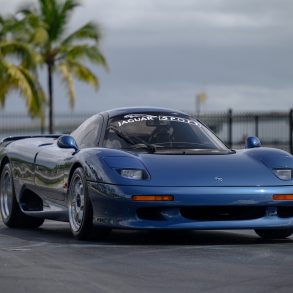During the ’50s, I raced XK120s. The first one was a ’52, the second a ’54. Albeit, I’m not mechanically inclined. I don’t know the difference between a Whitworth Wench and a Lucas Hug. In those days, Jaguars were so good, you could race them with virtually no preparation other than checking tire pressures and taping over the headlights.

My problem was our standing starts. We used to line up on the grid, two-by-two (or three-by-three) with our engines running. The starter would walk or run from the end of the field to the front. At the side of the road, he would jump in the air while waving the green flag and off we would go. Jaguars had a low first gear without synchromesh we called a “stump-puller.” To get the thing going, I would hold the revs at 6,000, waiting for the flag to start to drop. When it did, I floored the loud pedal and—after a few seconds—slamed the gear into second, while at the same time, momentarily stabbing the clutch pedal. The eventual result was that the clutch didn’t last as long as other components.
When the clutch got iffy in XK120 number one, I had the car painted red at a shop called “Earl Sheib.” They did the entire job in those days for, I think, $39. With fresh paint, I sold it to a college student who wasn’t really sure how the clutch and gears worked. Eventually, the same fate caught up with XK120 number two and I started thinking about another visit to Mr. Sheib.
A sale, however, would have left me not only without a racecar, but also daily transportation. Jim Peterson was one of my closest friends at the time. Through 1955, Jim raced his ’54 XK120 with great success. In addition, he was a member of the Arnolt-Bristol factory team at Sebring. He was so good at winning races that a dealer talked him into the seat of a new 1956 Corvette in which he ran that season without much success. It wasn’t Jim’s fault—Vettes were going through a lot of teething problems that year. I bought Jim’s Jaguar, which became my 120 number three.
Peterson was a building contractor by profession. In 1956, he was awarded the contract to build Riverside Raceway. After surveying the plot of land, Jim took off for Europe to study course layouts. During the trip, he visited the factory at Coventry where he purchased one of the few XKSSs that had been made before the fire at the factory destroyed the tooling.
When Jim and the car arrived back in California, he would occasionally drive the car to and from his home and the Riverside site, a roundtrip of about 130 miles. As time would allow, I accompanied Jim, riding in the left-hand passenger seat. At the site, Jim drove a surplus US Army Jeep—with me in the right-hand seat—around the property to plan the course layout.
In those days, the raceway site was located near a highway (US 395) that went from Riverside to San Diego (it still does, but now it’s a freeway). The property for the raceway was just north of March Air Force Base, where we had raced in 1953 and ’54, courtesy of General Curtis LeMay. Just south of the base, the road was long and straight.
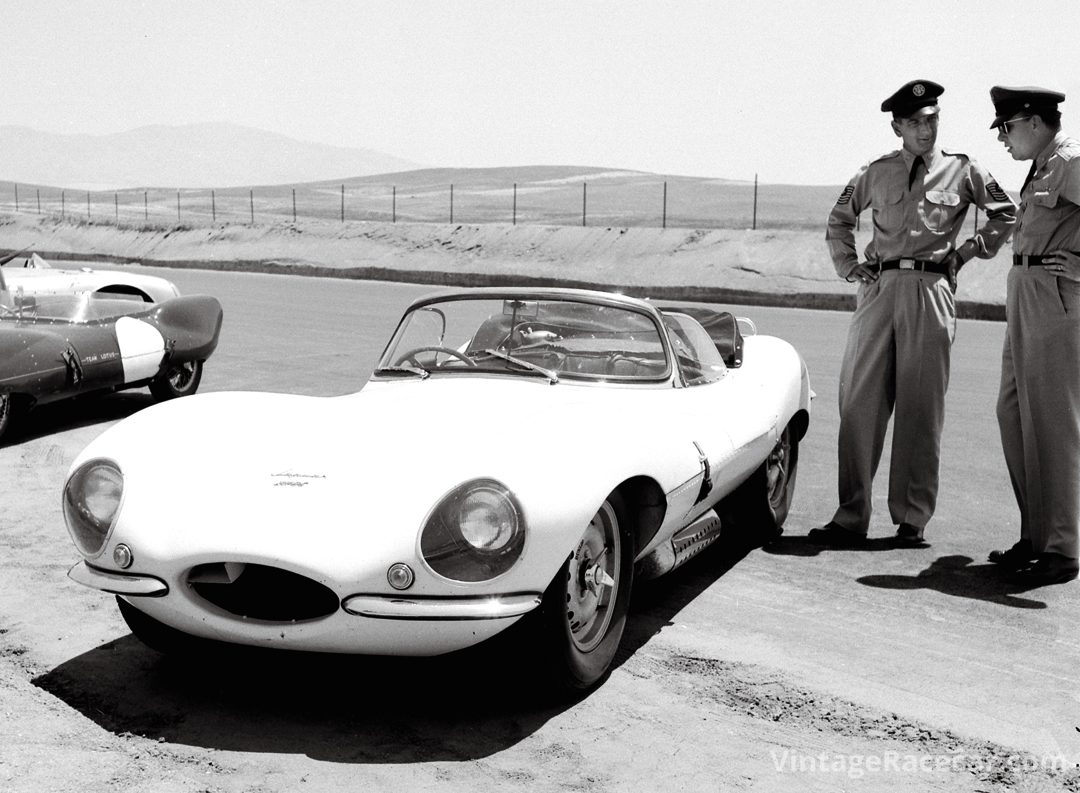
One day Jim told me, “I want to see just how fast this thing will go.” So we started off down the highway. After we passed the base, he floored the loud pedal. In the XKSS, the tachometer was in front of the driver and the speedometer in front of the passenger. So here I was, looking at the speedo, as well as traffic going the other way. Soon we were passing cars going our way as if they were standing still and the needle started to approach its limit, 180 mph. Even at that speed, I don’t remember much wind buffeting and the car seemed rock steady. I was supposed to tell Jim when the needle reached 180. When I did, he backed off, turned around and drove sedately back. Afterward, Jim remarked that he didn’t believe the speedo was accurate because of tire expansion.
Occasionally, Jim would drive his XKSS around his quiet residential neighborhood. To put it mildly, this attracted some attention, often from a Deputy Sheriff. When a patrol car would set off after Jim, he would speed away. But the problem was that the officers knew where he lived. A friend—Dr. John Valentine—lived across town. Dr. Valentine was an SCCA official. Jim had an arrangement with Dr. Valentine to leave his garage door open with an empty space. When a patrol car got after him, Jim would get far enough ahead so the officer couldn’t see him, then drive into the Valentine garage and close the door. This tactic caused great glee among local sports car aficionados. One night though, Jim had to spend the entire night with the Valentines.
When the Riverside course was completed, Jim in his XKSS led a procession of cars around for the very first lap. This time I wasn’t in the passenger seat because I was taking pictures. The following year, Peterson sold the car to Steve McQueen.
After completing Riverside, Jim became an SCCA official and eventually the Regional Executive of the Los Angeles Region. I know he would rather have raced, but his wife, Marge, insisted he quit. His first assignment was to prepare the Palm Springs course for the November 1957 road races. I went with him to help. In those days, we had a field telephone on each corner hard-wired to headquarters at the start/finish line. My job was to protect the wires by pushing them into the cement runway-expansion cracks.
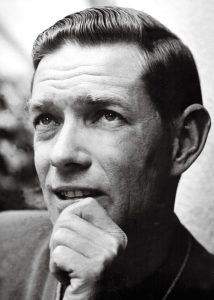
Photo: Art Evans
I had entered the XK120 I bought from Jim. Marge was scheduled to come to Palm Springs on Sunday, so when we lined up for the short Saturday preliminary race, I said, “Hey Jim, why don’t you take it out one last time?” He agreed and jumped in the cockpit. By 1957, the day of Jaguar’s dominance in the over-1,500-cc class had dimmed. Lined up around me were eight Corvettes, four 300SLs plus a gaggle of Healeys and ACs; mine the solitary Jag. He was gridded toward the back of the field.
When the flag dropped, Peterson drove as if possessed. One by one, he picked off Corvettes and Mercedes until—at the end of the five-lap race—he was gaining on the leading Corvette. Those in the pits, as well as the spectators, were all standing to watch the amazing feat of an outdated and underpowered car overpowering the best of the day. The next day, Marge arrived and I raced the Jaguar. She never found out and that was the last time Jim ever drove in anger.
Art Evans can be reached at agevans@yahoo.com


